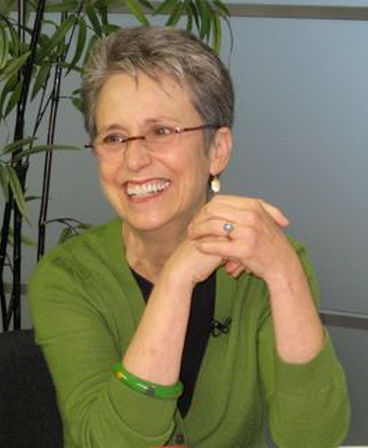Title of the work
Country of the First Edition
Country/countries of popularity
Original Language
First Edition Date
First Edition Details
Kate McMullan, Myth-O-Mania: Stop that Bull, Theseus! Mankato: Stone Arch Books, 2012, 192 pp.
ISBN
Genre
Humor
Mythological fiction
Novels
Teen fiction*
Target Audience
Crossover (Children and young adults; 8–13)
Cover

We are still trying to obtain permission for posting the original cover.
Author of the Entry:
Ayelet Peer, Bar-Ilan University, ayelet.peer@gmail.com
Peer-reviewer of the Entry:
Lisa Maurice, Bar-Ilan University, lisa.maurice@biu.ac.il
Susan Deacy, University of Roehampton, s.deacy@roehampton.ac.uk

Photo courtesy of Kate McMullan.
Kate McMullan
, b. 1947
(Author)
Grew up in St. Louis, Missouri, but now lives in Sag Harbor, New York. McMullan began her career as a teacher after which she studied Early Childhood Education. She worked as a teacher in Los Angeles and an American Air Force base in Germany. She is married to and works with the illustrator Jim McMullan.
She has commented: "As soon as I could, I began reading my way through the Children’s Room shelves at our local public library in St. Louis, Missouri. I carried my books home, settled in with a cat or dog or my guinea pigs on my lap, and read for hours. My favorites were Greek myths, Nancy Drew mysteries, Pippi Longstocking, and animal stories, but only if the animals didn’t die. I also read Little Women (it was sad but acceptable if people died) and The Borrowers, about tiny people who lived behind the walls of houses. I loved comic books, too, and Mad Magazine. When asked what I wanted to be when I grew up, I answered, "A reader."
"After college, I taught fourth grade in an inner-city Los Angeles school and on an American Air Force base in Germany. Every day after lunch I read to my students, and in time I started to wonder if I could write books like the ones I read to my class. I tried, but after a day of teaching, I had little energy left for writing, so I moved to New York City, where I’d heard writers lived, and took a job in publishing, which was less tiring than teaching."
"And I kept writing – stories about Fluffy, the Classroom Guinea Pig (who will never die), a Greek Mythology series, books set in a medieval school for dragon-slaying, and picture books with art by my favorite illustrator, Jim McMullan." (source, see here, accessed: February 21, 2019).
Since she started writing, McMulland has published over 100 children’s books. Her book Pearl and Wagner: One Funny Day was a Geisel Honor Book, and her book I Stink! was a Boston Globe-Horn Book Award Honor Book.
Sources:
Official website (accessed: June 26, 2018).
Profile at penguinrandomhouse.com (accessed: June 26, 2018).
Profile at harpercollins.com (accessed: June 26, 2018).
Profile at amazon.com (accessed: February 21, 2019).
Bio prepared by Allison Rosenblum, Bar-Ilan University, allie.rose89@gmail.com and Tikva Schein, Bar-Ilan University, tikva.blaukopf@gmail.com
Questionnaire
1. What drew you to writing / working with Classical Antiquity and what challenges did you face in selecting, representing, or adapting particular myths or stories?
I have always loved the ancient Greek myths, even as a child. I write books for kids, and thought it would be fun to retell some of the myths with a bit of twist, and what I came up with was using Hades as my narrator. In some versions of the myths, Hades is Zeus's older brother, and I thought having his little brother be the ruler of the Universe would annoy Hades quite a bit, so I figured that would make his retelling funny and engaging for kids.
2. Why do you think classical / ancient myths, history, and literature continue to resonate with young audiences?
I believe it's because the dieties are, for the most part, depicted as very human, with great character flaws as well as the capacity to do great good. I think humans connect with these gods and goddesses because of they show different aspects of the human heart.
3. Do you have a background in classical education (Latin or Greek at school or classes at the University?)
NO.
4. What sources are you using? Scholarly work? Wikipedia? Are there any books that made an impact on you in this respect?
I used the D'Aulaires' Book of Greek Myths and Theoi.com as well as various other sources. Although I wasn't telling the myths in the traditional way, I did try to stay faithful to the way each myth is usually presented.
Prepared by Allison Rosenblum, Bar-Ilan University, allie.rose89@gmail.com

Photo courtesy of Denis Zilber.
Denis Zilber
, b. 1962
(Illustrator)
Denis has a diploma in Advanced Character Animation Studies and has won the following awards for his freelance work as illustrator and character designer: “CG Choice” award of CGSociety.org (3 times), Animation Mentor Showcase 2009, Frontpage Exellence award of 3DTotal.com (twice). He has publications in Expose 4 – Finest digital art in the known universe by Ballistic Publishing, Australia, as well as in 2D Artist magazine and CGWorld magazine.
Source:
Official website (accessed: May 29, 2018).
Bio prepared by Allison Rosenblum, Bar-Ilan University, allie.rose89@gmail.com
Summary
This is the fifth book in the Myth-O-Mania series. In this series, Hades is the narrator who promises to tell the whole truth about the Greek myth; he claims that his brother Zeus is a myth-o-maniac (that is, a liar) and that he fabricated the myths and wrote his version so that he and his children will appear noble and praiseworthy.
In this book, Hades reveals the truth behind the myth of Theseus and the Minotaur. Hades claims that the Minotaur was actually Zeus’ grandson (Pasiphae was his daughter) and that he was ashamed of it and wanted to get rid of it, but his daughter, the Minotaur’s mother, objected. So he made up the story of Theseus killing the Minotaur. In this retelling, Poseidon confides in Hades that Theseus is in fact his son, and not Aegeus’ and then Hades accompanies Theseus on his way to Athens to meet Aegeus and help him defeat the fierce criminals on the way there. Then Hades saves Theseus from Medea’s machinations, and Poseidon asks Hades to save Theseus from the Minotaur (Theseus volunteered to go to Crete with the other Athenians who were sacrifices to the Minotaur). Hades and Cupid make Ariadne fall in love with Theseus and help him get a clue to the labyrinth. Meanwhile the Minotaur turns out to be a nice person named Asterius, who is not a monster at all; all he wanted was wrestling partners. The Athenians that were brought to him lived comfortably with him and they wrestled together. Hades then stops the wrestling match between Theseus and the Minotaur and declares it a tie. Theseus, Hades and Ariadne then leave Crete. On the way back, Theseus fights the robotic Talos which guarded Crete. Theseus then leaves the sea-sick Ariadne and Hades on Naxos and sails away. Later, when Dionysus comes to the island he falls in love with Ariadne and marries her. Theseus forgets to change his sails so his father Aegeus jumps to the sea and thus Theseus becomes the king of Athens.
Analysis
This series, while being jocular about the myths, also delivers an important message regarding the power of the written word. Of course the retelling in this series is fictional (as far as we know), but it proves that in order to change history, all Zeus had to do was write down the myths as he wished and these versions remained for posterity. It is an important statement regarding the power of stories, as well as authors. The author of the series probably wishes for her stories to remain as immortal and timeless as the Greek myths, which pass down from one generation to the next. This is also why she emphasizes Hades’ role as a writer at the epilogue of each book. She reveals to her audience the difficulties facing any writer and also the reward of well written and well received stories. Furthermore, by offering her (or Hades’) new version of the stories, the author simultaneously confirms the passing of the original myths as well. At each book Hades relates to the old, well known myth and then he retells it, using various facts from the old version. That way both versions gain recognition; the old myths and the new one. It is a clever way to educate the readers about the old myths, without repeating the old myth verbatim.
Regarding Theseus’ character, Hades names him “a natural self-promoter” (p. 77). Theseus continuously sought adventure to prove how heroic he was. Hades and Poseidon even refer to him as Bullheaded, thus jokingly likening him to the Minotaur. Theseus is characterized as forgetful. The author used the known story of how he forgot to change his sails after leaving Crete and makes it a recurring motif of his. He is not bad, or vain, just forgetful. Theseus is not a good king to the Athenians, because he forgot how to rule. The author pokes fun at the hero (as she did with Perseus in the book about Medusa in the series) and reveals all the big mythological heroes as laughable and flawed, whose tales were falsified by Zeus.
Interestingly, while Daedalus and Icarus are mentioned, the author does not refer to their tragic story. Daedalus remarks that his son does not listen to him, which is a hint for the readers who are familiar with their story. The author probably did not wish to darken the more comical mood of the story with the death of a boy and she probably did not wish to alter this story as well.


